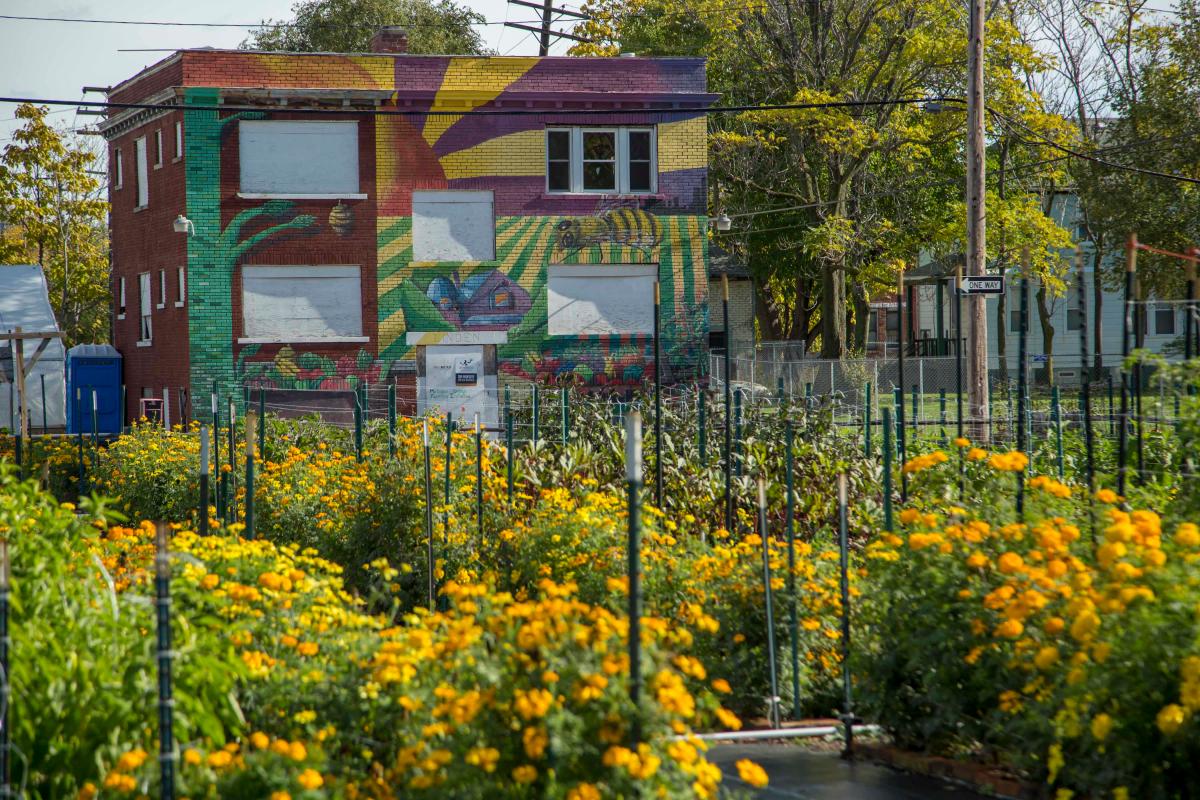How to Measure Social Impact of Community Collaborations

How to Measure Social Impact of Community Collaborations
The Michigan Urban Farming Initiative is working to debut America’s first sustainable urban agrihood – a neighborhood growth model with agriculture at the center of a mixed-use development. The all-volunteer nonprofit provides free produce to 2,000 households within 2 square miles annually, and it is growing into a diverse campus with the help of companies that believe in its mission.
BASF, Herman Miller, General Motors, Green Standards, and other corporate partners are working together to restore a long-vacant former apartment complex into a community resource center that will house educational programs, meeting space, and serve as MUFI’s new headquarters. This partnership among a chemistry company, automaker, furniture manufacturer and urban farmer is representative of how society is solving many of its challenges today: collaboration.
Each company contributes its own expertise.
- BASF building materials and technologies will improve energy efficiency and increase durability.
- GM, working with Green Standards, will donate some of its office furniture, as well as provide upcycled materials for building insulation and decor.
- Herman Miller will design purposeful spaces for collaboration and community.
“This partnership strengthens a community that’s our home,” said Dane Parker, executive director of GM global facilities. “We all benefit when Detroit is stronger. Collaboration is a really important part of this. It was natural to work together to help someone else as many hands make light work.”
Parker added that the team driving the project at GM does not have “sustainability” in their job titles.
“For sustainability to have the impact and results we all hope for, it has to come from everywhere in a company,” he said.
GM’s relationship with the urban farm began six years ago with employee volunteer support.
“People have a negative perception of parachute-style volunteering, but it’s misguided,” said Tyson Gersh, president and co-founder of MUFI. “I can say with certainly no one will work harder than the people who know they can walk away at the end of the day. Plus, people trapped in offices are ready to go.”
According to Gersh’s calculations, more than 8,000 volunteers have contributed more than 80,000 hours of service to a single neighborhood. With a volunteer hour valued at $23.54 in Michigan, that’s almost $1.9 million in service. He says it is important to accommodate different volunteer strategies to achieve a community-driven goal.
“You have people that will keep coming back because they are interested in having a deeper relationship with a nonprofit,” he said. “But instead of demanding everyone be attached to a given cause, recognize there is variation in how people approach volunteering and each one is valuable.”
Gersh acknowledges his organization alone will not make a meaningful dent in food scarcity or obesity; instead, he wants to create interest and awareness.
“We grow 22 varieties of tomatoes,” he said. “This diversity of selection starts interesting conversations about our food systems. It’s a living library of crops empowering how people understand food.
“We’ve had people be more discerning at the grocery store, asking for broader availability because they know what to ask for.”
In addition to these behavioral outcomes, social impact measurement takes several other forms:
- Increased awareness of the cause – both locally and globally – through social media and media coverage.
- Reduced environmental impact, like the amount of furniture diverted from landfill to nonprofits through GM’s donation.
- Neighborhood investment: Gersh heard people were purchasing homes because of the farm, so he surveyed new neighbors on how much they spent on the property and how much they put into renovations. The result: $3.5 million invested, which otherwise would not be supported by market conditions. The campus acts as a performance enhancer for adjacent land use.
Gersh believes the new community center’s building technologies will also lead to greater awareness and adoption of sustainable products in other neighborhood renovation projects. The building team is striving for LEED certification.
Track MUFI’s progress by following the organization on Facebook or visit www.miufi.org.

